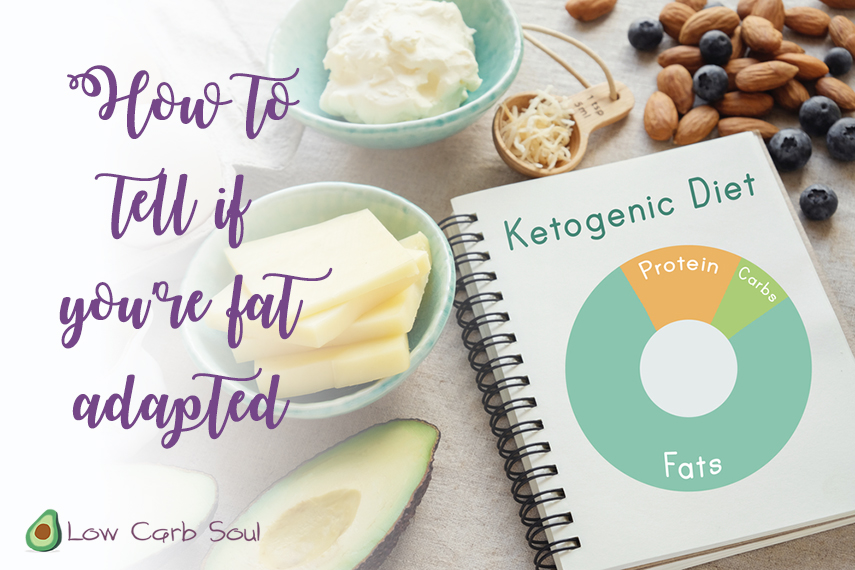How to tell if you're fat adapted
Being “in ketosis” and being “fat adapted” are two different things. Being in ketosis simply refers to a state in which your body is producing ketones.
Most people can get into ketosis fairly quickly but it takes longer to become fat adapted. Fat adapted, also referred to as keto adapted, is the state in which your body is accustomed to using fat as its primary source of fuel. Our bodies are always using a combination of glucose and fat for energy, but in someone who is a “sugar burner” (using carbs as the primary source of energy), the body will turn to glucose first. Once you’re fat adapted, the body no longer looks for energy from glucose because it now knows it can burn fat.
When you first start a keto diet, your body will burn through its glycogen stores (glucose stored in the body). This is what causes the rapid weight loss experienced in the beginning stages of a keto diet: each gram of glycogen is stored with 3 to 4 grams of water, so all of this water gets flushed out of the body as the glycogen stores are used up. But don’t be discouraged if people tell you you’re “just” losing water weight! All of this is necessary for your body to become fat adapted and to start experiencing the benefits that come along with it.
How long does it take to become fat adapted?
It typically takes about 2 to 3 weeks to become fully fat adapted. If you’ve just started a ketogenic diet and you feel like it isn’t working, give it some time. You may notice some signs of fat adaptation fairly quickly, but it may take a while to really experience all of the benefits of your new diet.
In the beginning, urine ketone strips can tell you if your body is producing ketones, but these are less effective over time, as your body begins to use ketones more efficiently and excretes less of them. Testing your blood for ketones is more reliable and can be done at home similar to the way you can check your blood sugar, but this type of testing can be expensive. Knowing what signs to look for will help you determine if your keto diet is working!
Signs that you’re fat adapted
The following are all signs that you’re becoming fat adapted:
- Your appetite stabilizes. You can go longer without eating, and probably also feel full with less food.
- You don’t have food cravings or the urge to snack as much between meals.
- You don’t get cranky or hangry if you haven’t eaten in a while.
- Your energy is more consistent; you don’t get the 3pm energy slump.
- Your mood may feel more stable also, since it isn’t subjected to the ups and downs of blood sugar.
- You have more energy.
- You feel like your cognitive performance improves. You may have better memory and concentration, or you don’t feel mentally exhausted after working all day. (Note: the energy and the mental clarity took the longest for me.)
After this point, subtle changes continue to occur throughout your body. Symptoms associated with inflammation, such as acne and nasal congestion, should improve. (If they don’t, take a look at your diet. You may be eating too much dairy, hidden carbs, artificial sweeteners, or something else that is interfering with your progress.)
How do you remain fat adapted?
As long as you consume below 50 net grams of carbs per day, your ketosis should remain fairly stable. Some people, such as athletes, may be able to eat more carbs, while others may need to reduce their carb intake even further.
The good news is that once you’re fat adapted, if you do happen to eat more carbs on a given day, your body can usually burn those carbs and go right back to burning fat.
Ready to get started on keto?
Download my free keto start guide to learn what to buy, what to expect during your first month, and what to eat as you start your ketogenic diet!
Subscribe to my mailing list



Follow Me